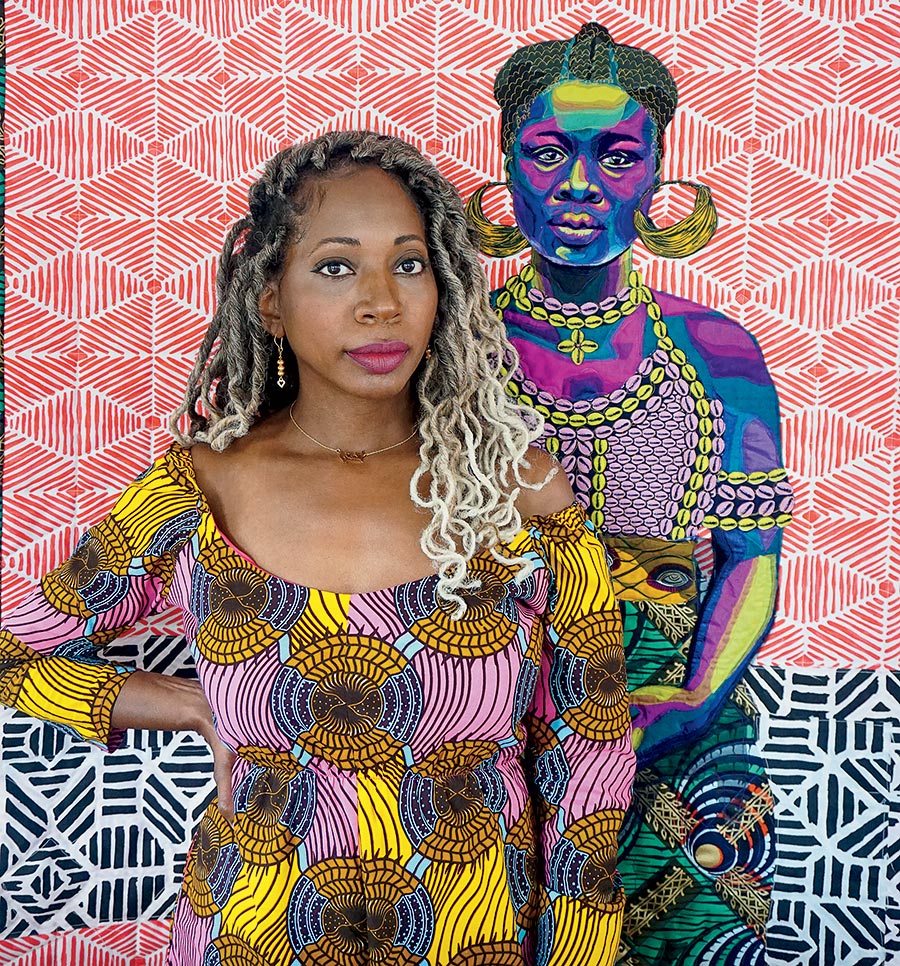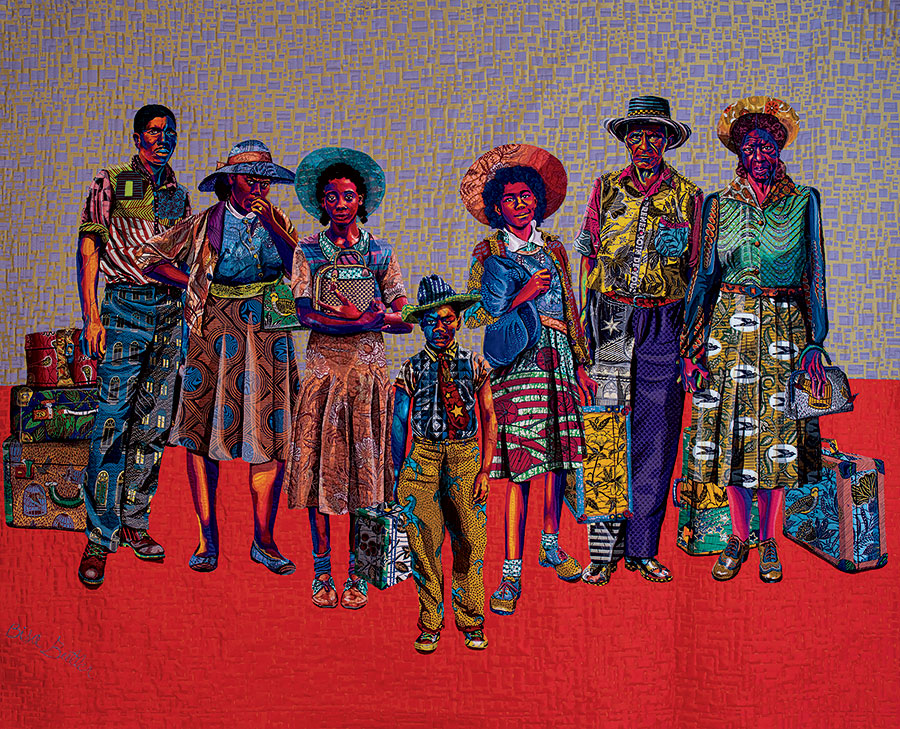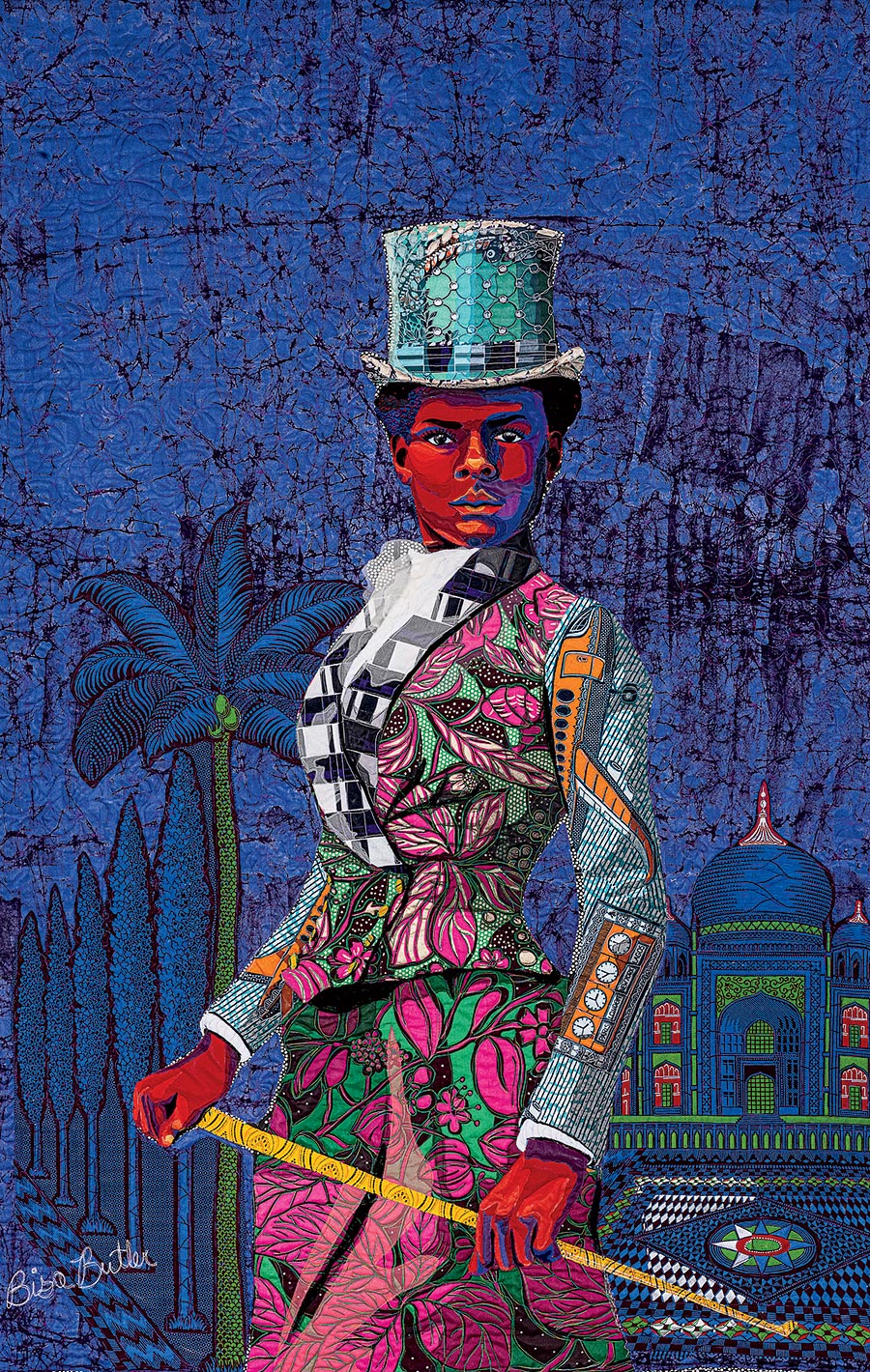When Bisa Butler appears on a video chat from her home studio in West Orange, New Jersey, the screen resembles one of her artworks. She sits in front of bright fabric printed with green leaves and branches on a white backdrop. She wears the kind of vibrant colors that she uses in her quilts — radiant blues and reds stitched in elaborate patterns. “I’m a fabric junkie,” she says, laughing. “I’m creating art of my subject, but the choices that I’m making also reflect something about me.”
Butler’s expressiveness is palpable in Bisa Butler: Portraits, her first-ever solo museum show, which runs through April 19 at the Art Institute of Chicago (after a previous stop at the Katonah Museum of Art in Westchester County, New York). Her quilts feature portraits of Black subjects taken from vintage photographs, rendered in bold colors and patterns (like speedbird, an African fabric with birds on it) and stitched atop busy and buoyant backgrounds. Butler trained as a painter at Howard University, where she studied under prominent figures from the Chicago artists’ collective AfriCOBRA, and her textile-based work has a painterly quality. “Our professors always stressed that anybody who looks at your artwork should feel good about themselves when they look at it,” Butler says.
The exhibition caps a remarkable two-year rise for Butler. Erica Warren, the Art Institute’s associate curator of textiles, first encountered Butler’s quilts at 2018’s Expo Chicago. “I was stopped dead in my tracks,” Warren recalls. “It was unlike anything I had seen before. Her amazing command of the materials to produce a kind of trompe l’oeil effect, a tricking of the eye, is unbelievable.”
That effect is the result of Butler’s thorough and time-consuming process. After selecting a photograph, she will blow the image up to life size (sometimes a composite of a bust and a separate figure from the shoulders down), then sketch on top of it to create a light-dark topography. She stitches each subject individually using layers of fabric before choosing a background pattern. For Portraits, Butler is premiering her largest work to date, The Warmth of Other Sons; she started the 10-by-12-foot quilt in March and finished it at the beginning of October.
The intricate method mirrors the thematic richness. “My artwork is like a photo album of a Black family,” Butler says, “but also the entire Black diaspora between here and Africa and the Caribbean. This is how we want to be seen.”

Bisa Butler in front of Dahomey Amazon, 2020

The Warmth of Other Sons, 2020




Comments are closed.